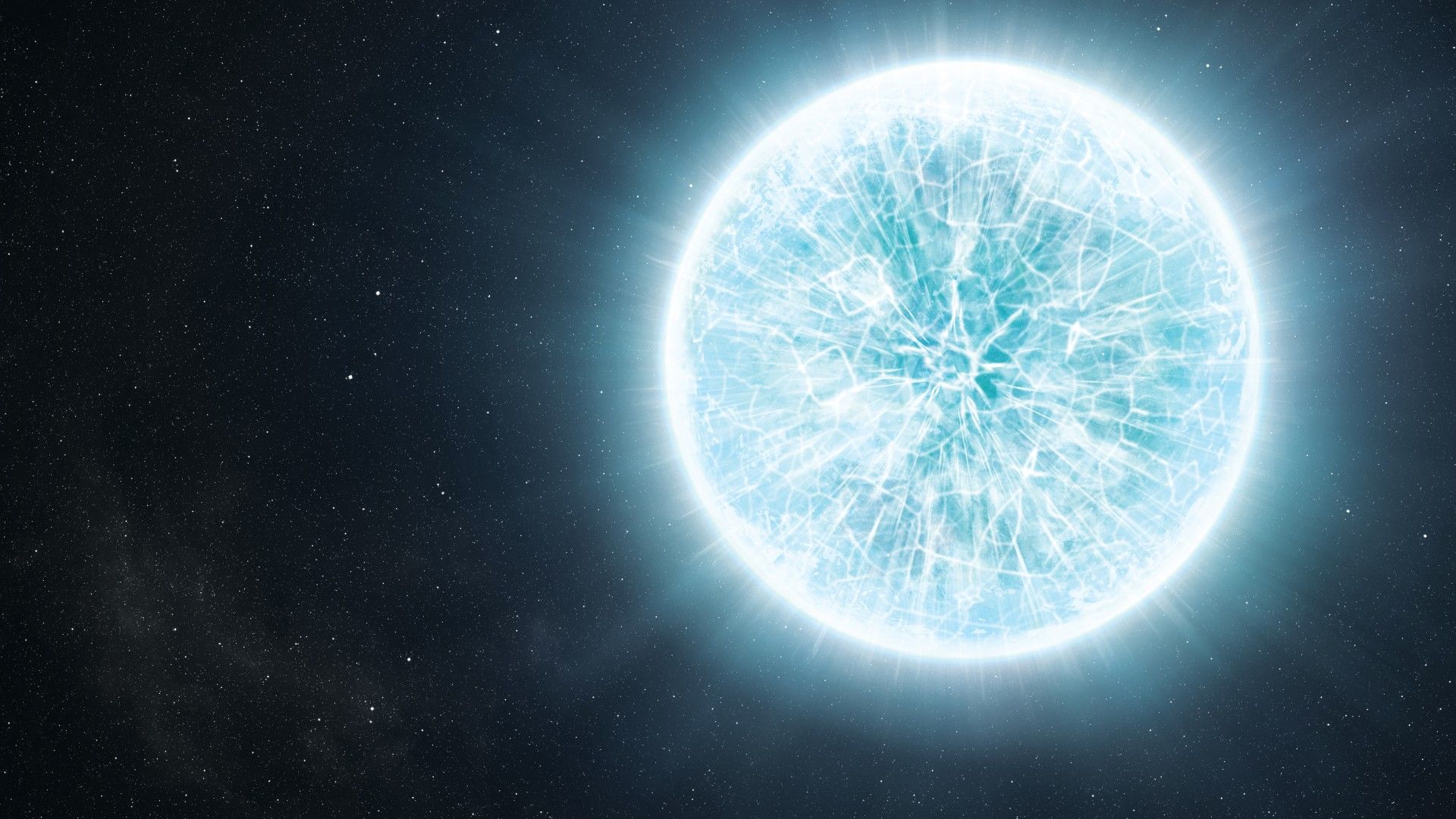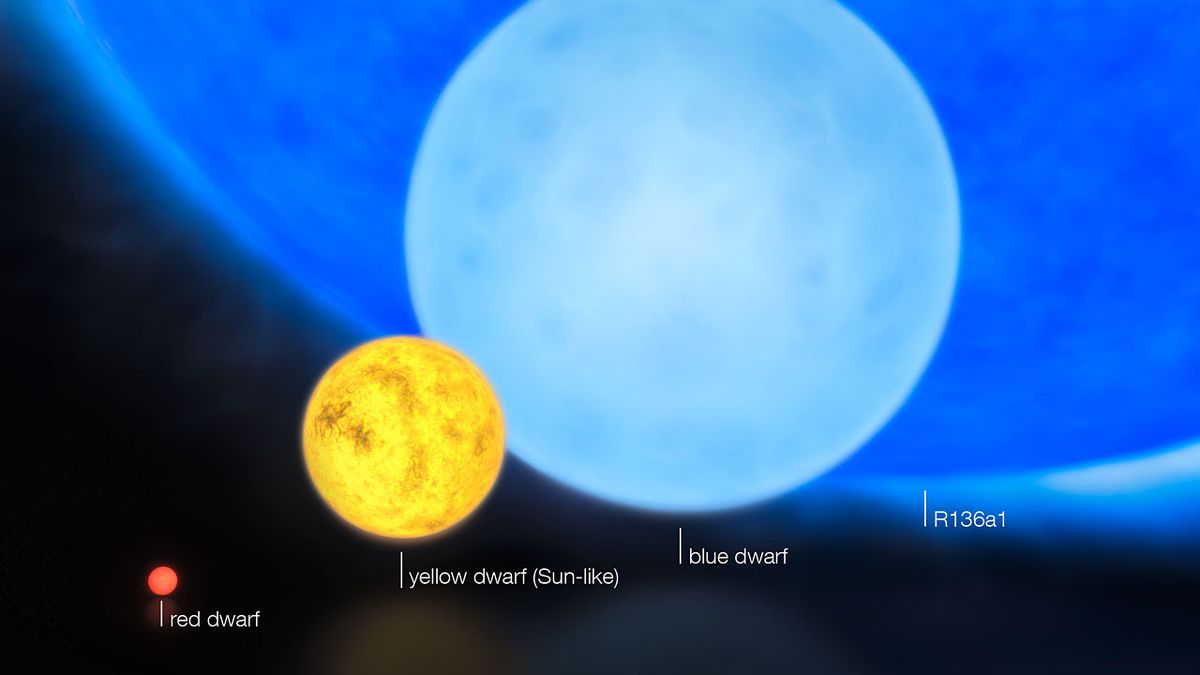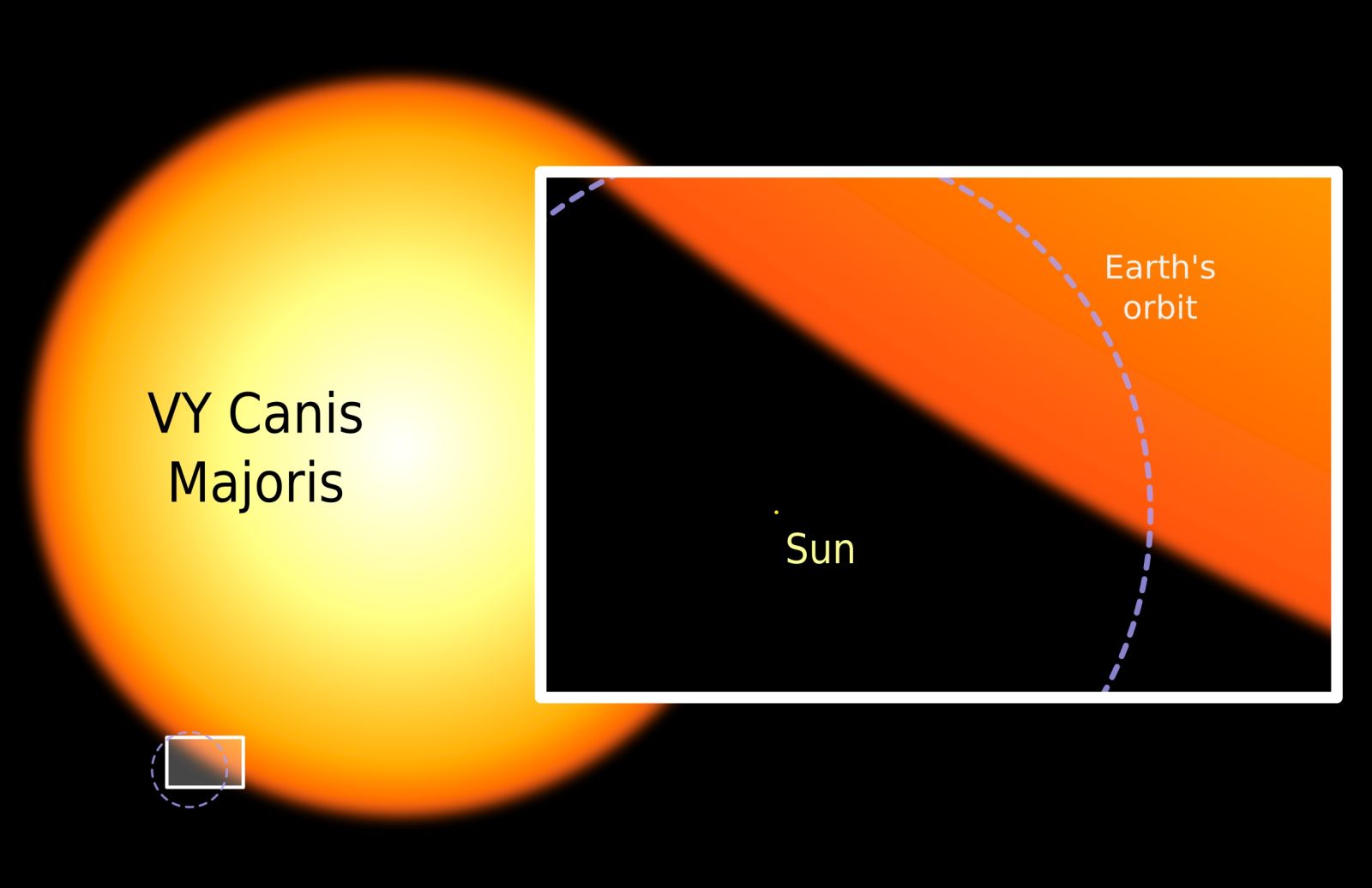Follow us on Google News (click on ☆)
This star, located about 6,000 light-years away, is a red hypergiant. Its diameter is nearly 1,500 times that of the Sun, but its mass is only 17 solar masses. This disproportion is explained by its advanced stage of evolution. It undergoes significant pulsations and variations in brightness.
At the end of their lives, stars like VY Canis Majoris enter an expansion phase. Hydrogen fusion moves into a shell around the helium-rich core. This reaction generates intense radiation that pushes the stellar atmosphere outward. The star cools and takes on a characteristic red hue.
R136a1, on the other hand, is the most massive known star, with about 300 solar masses. Its luminosity is equivalent to 4.5 million times that of our Sun, emitting mainly in ultraviolet. Its short lifespan is only a few million years. Radiation pressure limits its growth.
These stellar giants briefly illuminate the cosmos before disappearing in supernovae. Their study helps us understand the life cycles of stars.

Depiction of the star R136a1, holder of the records for mass and luminosity.
Credit: Tobias Roetsch/Future Publishing via Getty Images
How does a star become so large?
The expansion of a star at the end of its life results from internal changes. The core accumulates helium, a product of nuclear fusion, which disrupts the reactions.
Hydrogen fusion then moves into a shell around the core. This shell emits enormous amounts of radiation, which exerts outward pressure.
This pressure inflates the stellar atmosphere, significantly increasing the star's diameter. It cools and becomes a red giant or hypergiant.
This process is universal and is also predicted for our Sun in several billion years.

Size comparison of stars, from red dwarfs to R136a1, including the Sun.
Credit: European Southern Observatory
Why do massive stars have short lives?
A star's mass determines its rate of nuclear fusion. The more massive it is, the more intense and rapid the reactions are.
This intensity consumes stellar fuel, mainly hydrogen, at an accelerated rate. Very massive stars thus exhaust their reserves in just a few million years.
In comparison, a star like the Sun, of average mass, burns its hydrogen for about 10 billion years. The short existence of giants leads to an explosive end in a supernova.
These explosions disperse heavy elements essential for the formation of new stars and planets.
